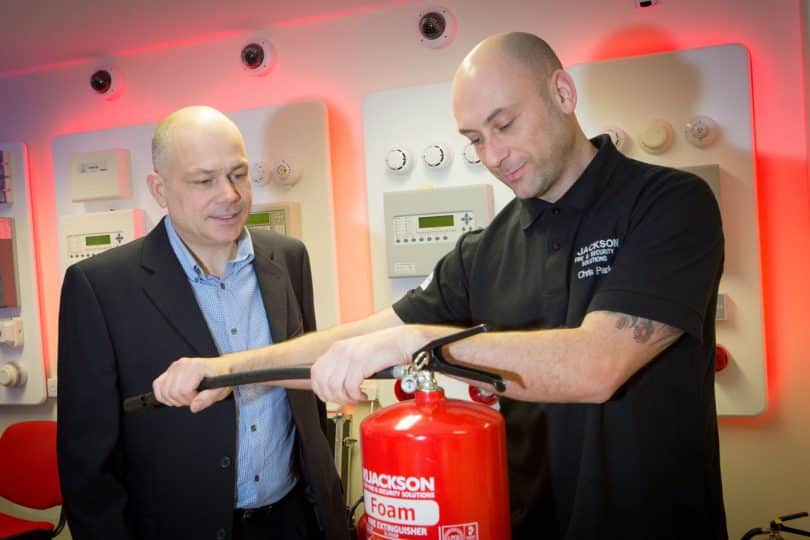Fire extinguishers are essential tools for extinguishing any small fire before it spreads to become out-of-control. To maximize effectiveness, they should be strategically located near escape routes or places most likely to experience fires–for instance your garage if it doubles as a workshop.
Most homes use an ABC type extinguisher, designed to fight three of the most prevalent house fires: wood, paper and cloth fires as well as gasoline and oil fires. However, there are other fire extinguisher types available that are designed for different types of fires.
Class A
Fire extinguishers come rated for specific types of fires; class A extinguishers are designed to address everyday household items like wood, cloth, paper and most plastics that typically burn slowly enough for easy containment.
Class A fires should be put out with a pressurized water fire extinguisher to reduce injuries while you evacuate or wait for fire department response. Multiple such extinguishers should be strategically located throughout your home in areas likely to experience fire outbreak.
An excellent way to tackle class A fires is with a multipurpose dry chemical extinguisher, which is suitable for both types of flames. These extinguishers contain fine powder that covers and blankets the flame, shutting it out. Ideal for most homes and businesses alike, multipurpose dry chemical extinguishers range in size from 16 ounces up to 10 pounds and look similar to large cans of sunscreen or bug spray.
Class B
Class B fires involve the rapid ignition of liquid fuels like gasoline, kerosene, grease and oil that can quickly spread. Class B extinguishers contain carbon dioxide or foam chemicals to extinguish these flames quickly.
Fires that occur in open environments like petrol stations, garage forecourts and workshops require different strategies than using an ordinary classes A fire extinguisher due to their unique liquid composition.
Water extinguishers are among the easiest to use and maintain, consisting of air-pressurised water that soaks and smothers fire, stopping its chemical reaction. Some models are suitable for use near electrical equipment if they’ve been dielectrically tested; look out for those marked “green label”. Alternatively, consider an extinguisher equipped with built-in sensors like MIJA’s EN-Gauge that runs off 9-volt batteries to monitor pressure levels within your fire extinguisher and alert you when low levels occur so you can refill it as soon as it runs low – an essential tool in case of emergency!
Class C
As soon as a fire breaks out, it’s essential that you remain calm and act quickly – having a fire extinguisher handy can help ensure this. Fire extinguishers work by distancing elements of the fire triangle – fuel, heat and oxygen.
Class A fires typically arise from combustible materials like wood, paper, and cloth; while Class B blazes result from gasoline, oil, or certain paints. Finally, Class C blazes result from electrical equipment such as appliances or motors being accidentally activated.
Pressurized water, foam, carbon dioxide, multipurpose dry powder and halon extinguishers can effectively extinguish Class A and Class B fires; however they cannot put out live electrical fires (Class C). Class D fires occur due to magnesium, lithium or titanium being ignited combustibly – these typically happen in factories or shops that deal with metal. In these instances dry powder extinguishers should be utilized.
Class D
Combustible metals like magnesium, titanium, sodium and potassium present unique hazards during fires that must be managed using specific approaches. Class D fires can quickly cause significant damage; to ensure you’re prepared, make sure that a suitable extinguisher is always nearby for these type of scenarios.
Large sheets of these metals typically do not ignite, yet small particles such as shavings and dust may ignite and start fires in laboratories and facilities that use manufacturing processes.
These kinds of fires can be extremely challenging to put out and can often cause extensive structural damage as well as smoke inhalation from those within. Dry powder Class D extinguishers are the optimal choice when fighting such fires in laboratories, manufacturing facilities, warehouses or any other businesses that deal with metals.







